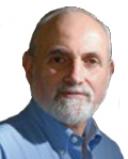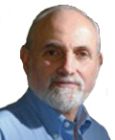Creativity
A Doctor's Prescription? Creativity
Creativity coach Karen Sjoholm provides tips for the creative life.
Posted March 23, 2021 Reviewed by Abigail Fagan

Creativity has the power to heal. If you reduce your stress, you reduce your health risks, and creative activities like weaving, potting or painting can reduce your stress levels.
The more self-aware we become and the better we identify what’s bothering us, the better our chances for maintaining our physical health, and creative activities like journaling and memoir writing can dramatically increase our self-awareness. In today’s post, creativity coach Karen Sjoholm chats about the relationship between creativity and physical health.
Karen explained:
I have always dreamed of leaving a doctor’s office clutching a memo ordering daily doses of creativity for whatever was ailing me. Imagine a prescription list something like this: playtime: once a day; journaling: two times a week; painting: weekly; dancing: whenever you feel like it!
Since ancient times, well-being and the arts have been linked. The use of music in Greek healing temples, Navajo sand paintings, Ethiopian healing scrolls, and the anatomical votive offerings of many cultures are just a few of the ways that creative expression has played a role in physical, emotional, and spiritual health.
The arts and wellness are connected in the lives of multiple artists. Before Henri Matisse was a world-known artist, he was a young man headed into a law career. However, he became acutely ill, and to help him through recovery, his mother bought him paints. Through color and form he found “a kind of paradise,” gave up law, and plunged himself into creativity.
When he was older, he suffered from cancer and arthritis and was unable to paint. Rather than give in to the debilitating effects of the illness, he invented a new way of working. With scissors, he cut out lively figures, flowers, and animals from brightly colored papers and continued to immerse himself in the life-sustaining force of creative energy.
Contemporary studies, with a variety of populations, demonstrate that the arts have multiple positive effects on our health. Participation in storytelling, theatrical groups, chorale programs, visual arts, writing, and dance impact blood pressure, heart rate, pain reduction, balance, flexibility, self-esteem, and mental health, and result in fewer visits to the doctor and faster hospital recovery.
As curator of a hospital art gallery, I exhibited the sculpture of Dr. Joel Samuels who experienced a severe back injury with persistent pain. He said, “The idea of tapping into the creative mind as a way of healing chronic pain was one of several treatment options I pursued.” First, he tried painting but did not feel engaged with the process. “Then I began carving small hand-sized pieces of alabaster and marble. It was as if I entered a vast, open, spacious room leaving the back pain outside the door. Stone carving helped transform my life of chronic pain, depression and drug dependency into renewed vitality and the ability to work, dance and feel whole again.”
Besides being a testament to creativity supporting well-being, Dr. Samuel’s experience is also a reminder to explore different forms of creativity. It may take several tries before discovering which materials and processes resonate most powerfully with you. So, before the need arises for traditional medicine, you can become proactive in nourishing your emotional, spiritual, and physical well-being by reaching for a daily dose of creativity!


